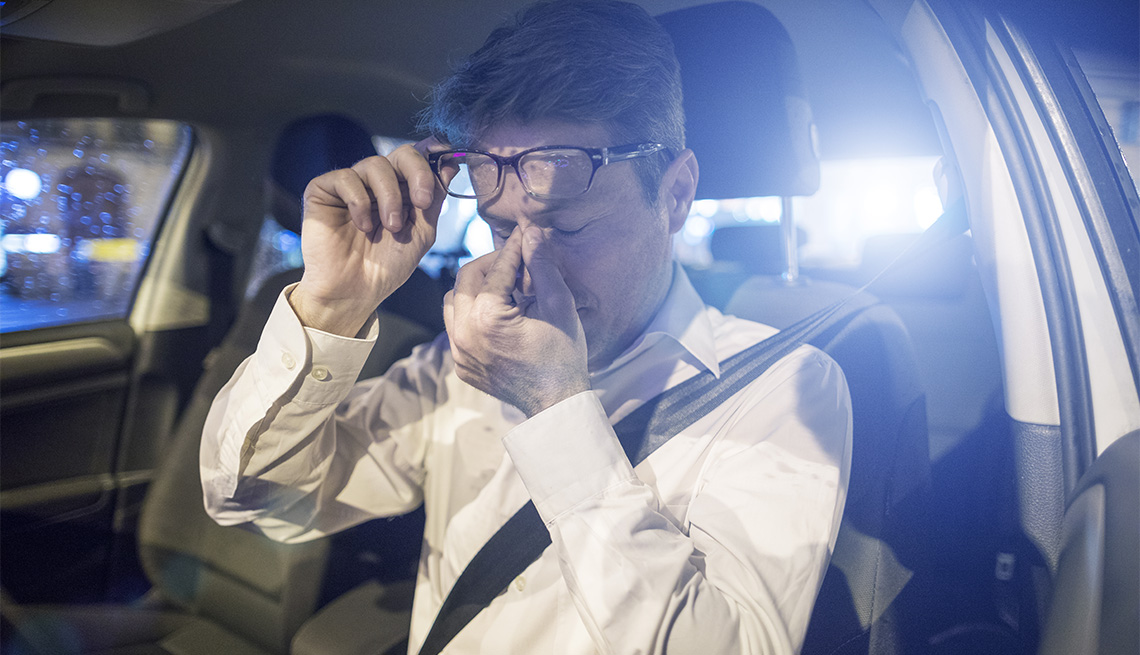
Cause of impaired driving and how to prevent it
- Select a language for the TTS:
- UK English Female
- UK English Male
- US English Female
- US English Male
- Australian Female
- Australian Male
- Language selected: (auto detect) - EN
Play all audios:

Whether a birthday, holiday or another celebration, numerous events throughout a year can lead to impaired driving. However, alcohol isn't the only substance that drivers should be
cautious about before getting behind the wheel. Impaired driving remains a major highway safety problem nationwide. Older drivers often face declines in vision, mental acuity and motor
function. The addition of alcohol or other drugs adds an even greater risk to the safety of themselves and others, says Joe Feese, communications director at the Governors Highway Safety
Association (GHSA). "Mature drivers — those age 65 and over — represent a growing segment of America's licensed drivers and face an increased risk of traffic-related injuries and
fatalities. In 2017, [more than 6,800] people 65 and older were killed in motor vehicle traffic crashes, according to the National Highway Transportation Safety Administration [NHTSA],”
Feese said. In 2018, the deaths topped 6,900, a number that has been increasing steadily since 2011, according to the NHTSA's Fatality Analysis Reporting System. Drinking is the leading
cause of impairment while driving, but drivers need to be aware of how other substances can affect their safety. ALCOHOL EFFECTS OF BLOOD ALCOHOL The concentration of alcohol in the blood
is generally measured in percentages, so a level of 0.08 percent is 0.08 grams of alcohol per deciliter of a person’s blood. • ZERO PERCENT. Only safe level • 0.01 TO 0.03, impairment
begins. Concentration, judgment, reflexes and vision start to become affected. • 0.04 TO 0.07, risk of crash. Greater effects on concentration, judgment, reflexes and vision. Effects are
increased when combined with fatigue, illness, other drugs, poor driving conditions or stress. •0.08 TO 0.11, increased risk of crash. Illegal in every state. The risk of crash is 6 to 10
times greater than at zero percent blood alcohol, and the level of impairment is greatly increased. • 0.12 TO 0.15, very high risk of crash. Mental functions, motor skills and vision are
severely impaired. • 0.16 OR MORE, extreme crash risk. Unconsciousness may come at 0.25 to 0.35. Death may occur at about 0.35 to 0.45 blood alcohol content. As you get older, the
conventional wisdom of consuming one drink per hour to drive safely might need to be reconsidered. Older adults may be more susceptible to the effects of alcohol on driving performance
compared with those ages 25 to 35, a 2014 study from the University of Florida found. As the body ages, its ability to break down alcohol decreases. Therefore, the alcohol stays longer in an
older person's body. Blood alcohol content can continue to rise for a time after the last drink is consumed. About a third of all traffic crash fatalities in the United States involve
drunk drivers. Men are more likely than women to be driving in fatal crashes. In 2017, 21 percent of men were drunk in these crashes, compared with 14 percent of women, according to the
NHTSA. To help prevent a crash, the Centers for Disease Control and Prevention (CDC) suggests: • Designate a nondrinking driver before anyone in a group starts drinking. • DON'T LET
YOUR FRIENDS DRIVE impaired. • GET A RIDE HOME, use a ride-hailing service or call a taxi if you have been drinking or using drugs. • REMIND YOUR GUESTS to designate their sober driver if
you're having a party in which alcohol will be served, to offer alcohol-free beverages and to make sure all guests leave with a sober driver. • DON'T BELIEVE MYTHS that caffeine
will sober you up or that driving is safe if words are not slurred. Remember, one drink is defined as one 12-ounce beer or wine cooler, one 5-ounce glass of wine or 1.5 ounces of 80-proof
distilled alcohol. DISTRACTIONS Cellphone use among drivers is a growing cause of accidents. During daylight across America, about 481,000 drivers are using cellphones while driving, the
NHTSA says.
